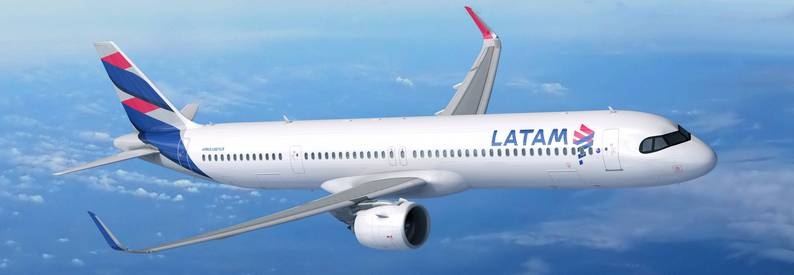LATAM Airlines Group Plans Strategic Expansion and Fleet Growth

LATAM Airlines Group’s stellar performance in 2023 is setting the stage for substantial growth in the coming years, as highlighted by the company’s ambitious plans to expand its fleet. Roberto Alvo, the CEO of LATAM Airlines Group, revealed these expansion plans during the Aviation Week Network’s Routes Americas conference in Bogotá.
The airline is actively exploring opportunities to augment its fleet, particularly focusing on narrowbody aircraft. Alvo mentioned the potential inclusion of Airbus A320s or Boeing 737s, models that have previously been part of the fleet in Colombia, showcasing LATAM’s versatile approach to sourcing aircraft from both Airbus and Boeing.
Currently, LATAM’s fleet boasts approximately 250 narrowbodies and over 50 widebodies, with a significant order of around 100 Airbus A320neo-family aircraft already in place. Additionally, the airline is looking forward to integrating the A321XLR into its lineup, anticipating operational commencement within a few years. This strategic move aims at phasing out older aircraft, enhancing efficiency and sustainability.
LATAM’s Fleet Age
Airbus A319 average age: 15.7 years
Airbus A320 average age: 11.6 years
Airbus A320neo average age: 3.2 years
Airbus A321 average age: 8.5 years
Boeing 767-300ER average age: 11.3 years, some to be converted to cargo
Boeing 777-300ER average age: 12.5 years
Boeing 787-8 average age: 8.3 years
Boeing 787-9 average age: 5 years
In 2025, LATAM is set to receive four Boeing 787s, reinforcing the backbone of its widebody fleet, with plans for 10 more in the subsequent years.
Underpinning these expansion efforts are LATAM’s robust operating margins and a strong post-COVID balance sheet, positioning the airline as a leading player ready to support the anticipated growth in Latin America’s aviation sector. Alvo emphasized the region’s untapped potential and LATAM’s readiness to facilitate this development through strategic partnerships, like the one with Delta Air Lines. This alliance extends LATAM’s reach, offering access to over 300 destinations across South and North America, and highlights the synergy between the two carriers’ networks.
Moreover, Alvo sees significant opportunities for tourism growth in Latin America. He advocated for a collaborative effort among governments, the tourism industry, airlines, and infrastructure providers to unlock the region’s full potential. By drawing parallels with the tourist influx in Mexico, Alvo questions why other Latin American countries, including Colombia and Chile, cannot achieve similar success. His commentary not only underscores LATAM’s investment in regional connectivity but also calls attention to the broader need for strategic initiatives to boost tourism.
In summary, LATAM Airlines Group’s solid performance in 2023 is not just a testament to its resilience but also a catalyst for its future expansion and contribution to the aviation and tourism landscape in Latin America.
Sources: AirGuide Business airguide.info, bing.com, aviationweek.com
